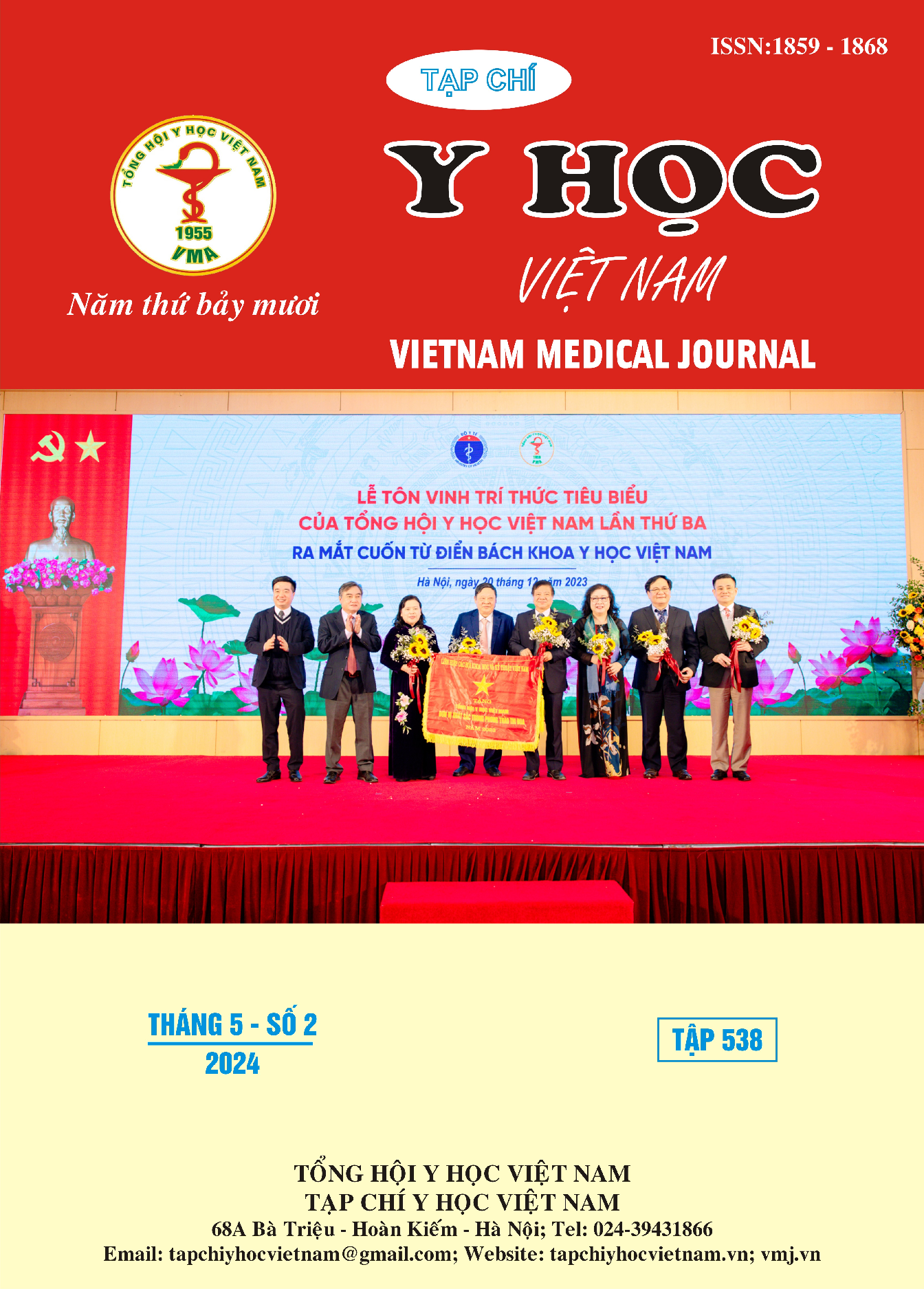MỘT SỐ ĐẶC ĐIỂM LÂM SÀNG VÀ CẬN LÂM SÀNG CỦA BỆNH NHÂN UNG THƯ DẠ DÀY GIAI ĐOẠN MUỘN TẠI BỆNH VIỆN K
Nội dung chính của bài viết
Tóm tắt
Mục tiêu: Nhận xét một số đặc điểm lâm sàng và cận lâm sàng của bệnh nhân ung thư dạ dày giai đoạn muộn. Đối tượng và phương pháp nghiên cứu: Nghiên cứu mô tả cắt ngang trên 52 bệnh nhân có chẩn đoán xác định là ung thư dạ dày giai đoạn muộn, không còn khả năng phẫu thuật triệt căn, tại bệnh viện K từ tháng 6/2016 đến tháng 3/2020. Kết quả: Độ tuổi trung bình của bệnh nhân là 63,8, đa số bệnh nhân trên 50, cao tuổi nhất là 75 tuổi, thấp nhất là 42 tuổi. Tỷ lệ nam/nữ là 1,9/1,7. Bệnh nhân có tiền sử bệnh lý dạ dày là 17,2% và 7,7% bệnh nhân có tiền sử gia đình mắc bệnh ung thư. Phần lớn bệnh nhân có thể trạng tốt PS 0-1 (84,6%). Đau bụng là triệu chứng cơ năng hay gặp nhất chiếm 76,9% trường hợp, đầy tức bụng khó tiêu, ăn kém, sụt cân chiếm 55,8%, 53,9% và 51,9%. Bệnh nhân Carcinoma tuyến thể kém biệt hóa chiếm tỉ lệ cao nhất với 53,8%. Bệnh nhân được phẫu thuật triệu chứng là 55,8%, bệnh nhân có một vị trí di căn là 69,2%. Gan và phúc mạc là vị trí di căn thường gặp nhất lần lượt là 34,6% và 30,8%. Kết luận: Tuổi trung bình của bệnh nhân là 63,8, phần lớn bệnh nhân có thể trạng tốt, đau bụng là triệu chứng cơ năng hay gặp nhất (76,9%) và carcinoma tuyến kém biệt hóa chiếm tỉ lệ cao nhất (53,8%). Gan và phúc mạc là vị trí di căn thường gặp nhất lần lượt là 34,6% và 30,8%.
Chi tiết bài viết
Từ khóa
ung thư dạ dày, giai đoạn muộn, đặc điểm lâm sàng và cận lâm sàng
Tài liệu tham khảo
2. Yang T, Shen X, Tang X, et al. Phase II trial of oxaliplatin plus oral capecitabine as first-line chemotherapy for patients with advanced gastric cancer. Tumori. 2011;97(4): 466-472. doi:10. 1177/030089161109700409
3. Nguyễn Khánh Toàn. Đánh giá kết quả của phác đồ XELOX trong điều trị ung thư dạ dày giai đoạn muộn tại bệnh viện K. Đại học Y Hà Nội. 2013. p 38
4. Tô Như Hạnh (2012). Đánh giá kết quả hóa trị liệu phác đồ EOX cho ung thư dạ dày giai đoạn muộn không còn khả năng phẫu thuật triệt căn. Đại học Y Hà Nội.
5. Ang TL, Fock KM. Clinical epidemiology of gastric cancer. Singapore Med J. 2014;55(12): 621-628. doi:10.11622/smedj. 2014174
6. Park YH, Lee JL, Ryoo BY, et al. Capecitabine in combination with Oxaliplatin (XELOX) as a first-line therapy for advanced gastric cancer. Cancer Chemother Pharmacol. 2008;61(4):623-629. doi:10.1007/s00280-007-0515-7
7. Yoshida M, Ohtsu A, Boku N, et al. Long-term survival and prognostic factors in patients with metastatic gastric cancers treated with chemotherapy in the Japan Clinical Oncology Group (JCOG) study. Jpn J Clin Oncol. 2004; 34(11):654-659. doi:10.1093/jjco/hyh120
8. Nguyễn Văn Hiếu, Nghiên cứu đặc điểm lâm sàng, cận lâm sàng và kết quả điều trị phẫu thuật ung thư dạ dày sớm tại bệnh viện K từ 2000-2006. Tạp chí Ung thư học Việt Nam, 2008. Số 1: p. 176-181.
9. Wang CS, Chao TC, Jan YY, Jeng LB, Hwang TL, Chen MF. Benefits of palliative surgery for far-advanced gastric cancer. Chang Gung Med J. 2002;25(12):792-802.


